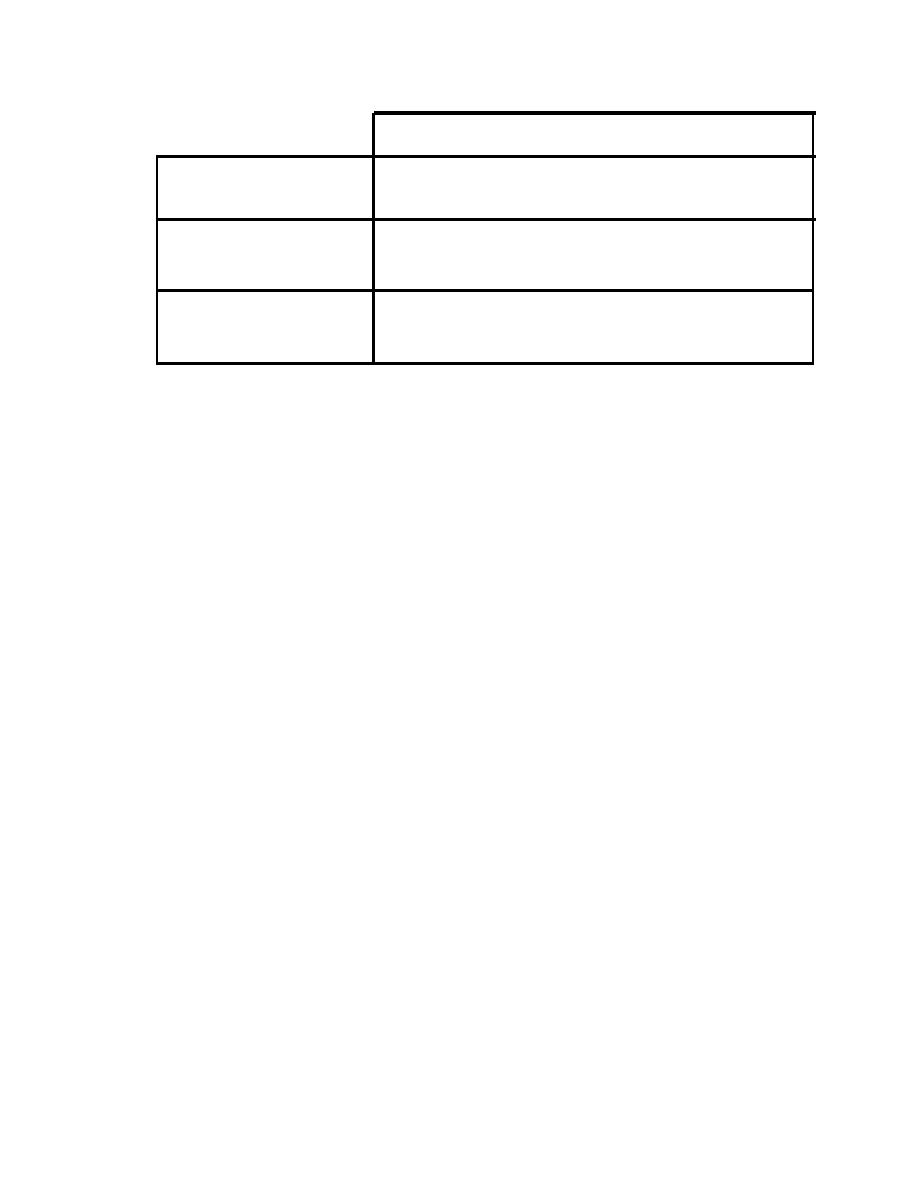
TM 5-805-4/AFJMAN 32-1090
Table 7-1. Plenum/Ceiling Transfer Factor.
Octave Band Center Frequency (Hz)
63
125
250
500
1000
2000
4000
Type 1
Fiberglass Tile
4
8
8
8
10
10
14
1/2" - 6 lb/cu.ft
Type 2
Mineral Fiber Tile
5
9
10
12
14
15
15
5/8" - 35 lb/cu.ft
Type 3
Sheet Rock
10
15
21
25
27
26
27
5/8" - 22 lb/sq.ft
Values for ceilings with typical penetrations and light fixtures.
Note
the NC values, octave band data should be re-
for 1,500 CPM, over spaces where the noise should
quested for any facility where sound level is
not exceed an NC or RC 40.
(b) Locating the units at least 5 ft. away
considered critical. In using the manufacturer's
from an open return air grille located in the
data care should be taken to note the data usually
applies only to diffusers in an ideal installation.
ceiling,
(c) Installing sound attenuators, provided as
For example placing a damper, even in an open
position, behind a diffuser or grill may increase
options by some manufacturers, or acoustically
the noise generated by up to 15 dB. In general,
lined sheet metal elbows, at the induced (return)
where sound level is critical dampers should not
air openings in the casings of fan powered units,
be placed directly behind diffusers, but should
or
(d) Installing acoustically lined elbows
preferably be located where the diffuser duct
branches off the header, or main duct. In this
above ceiling return air openings when they must
location any damper generated sound can be atten-
be near, or directly below a terminal unit.
c. Diffusers, Grilles, and Control Dampers. Dif-
uated by acoustic lining in the diffuser drop, and
any resulting non-uniformity in the air flow deliv-
fusers and grilles are devices used to deliver to, or
ered to the diffuser will be much less than if a
return air from, a building space. They are avail-
damper is placed directly behind the diffuser. Also
able in rectangular and circular forms, and in a
the position of deflection bars in grilles, and vanes
linear or strip form. Generally these devices in-
in diffuser can change the level of the noise
clude vanes, bars, tins, and perforated plates to
generated. Thus, these factors need to be noted
control the distribution of air into the space. All of
when using the data to predict diffuser sound
these elements which make up a diffuser or grille
levels in a space. Finally, in regard to published
act as spoilers in the air stream. When the air
data it should be noted that the data are taken
flows across the spoilers noise is generated that,
with uniform air delivery to or from the device. In
for a particular diffuser or grille design, varies by
application, this condition may not be met as
the 5th to the 6th power of the velocity. Because of
shown in figure 12.1 showing that with non-
the wide variety in diffuser design, and the sizes
uniform flow caused by short duct connections to a
available, manufacturers publish sound level data
header duct, or by badly misaligned flexible duct
in their catalogs. Most manufacturers only provide
the sound levels may be quickly increased by 5,
the NC level that the diffuser noise will reach
10, or 15 dB.
with different quantities of air flow in a room
where the "Rel SPL" is 10 dB. Thus for a room
with different acoustical properties an adjustment
7-4. Control Of Fan Noise In A Duct Distribu-
has to be made to the quoted NC value. Some
tion System.
manufactures also publish the sound power level
Fan noise propagating along a duct system may be
of the diffusers or grilles in octave bands. As this
reduced by (1) propagation along the duct, (2) by
form of information is more useful for design than
7-3


 Previous Page
Previous Page
